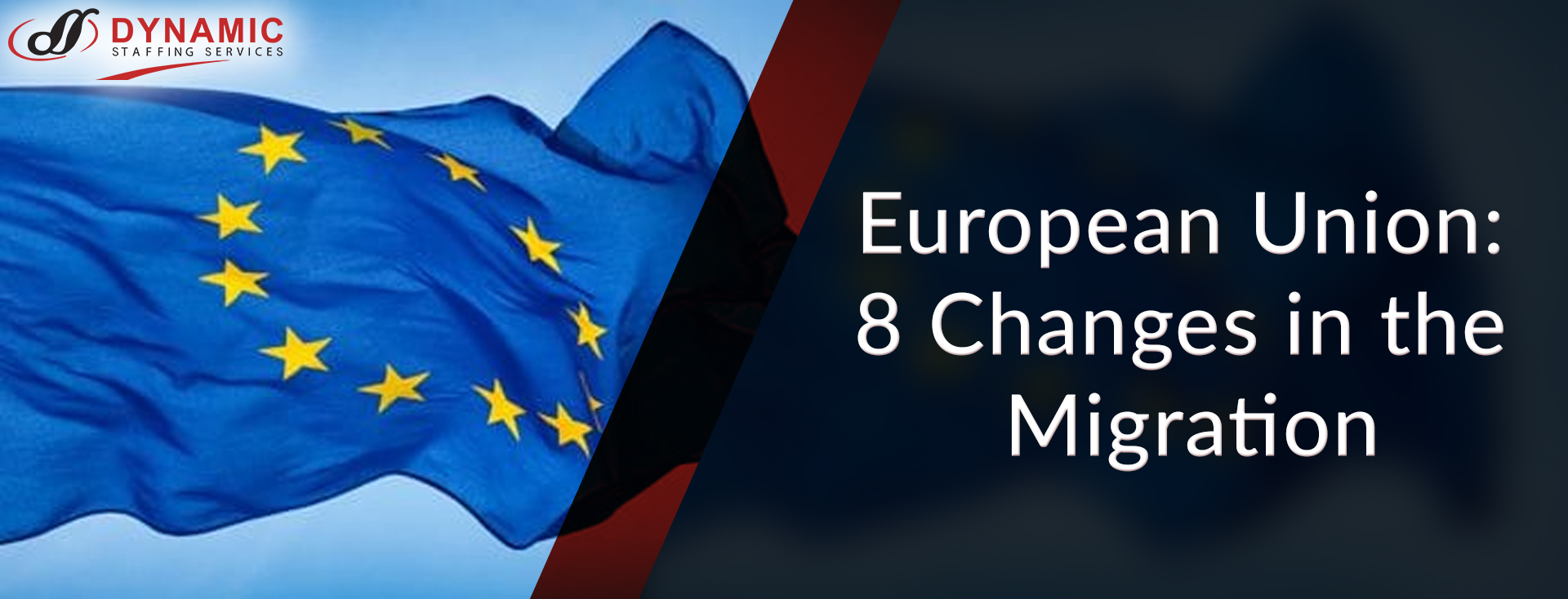Long-term migration could solve a skills gap caused by an ageing population, low childbearing rates, and an increase in the use of technology in the workplace, as opinions towards migration are still changing.
UK Migration
The potential consequences of reduced work migration, particularly of lower-skilled workers, post-Brexit became very apparent over the past 12 months as the skill shortages that emerged during the pandemic became more pronounced and contributed to inflationary pressures.
As a response, the government has established distinct categories for work visas under the temporary worker visa program or the skilled worker visa. However, employers’ ability to fill skill gaps through work visas is constrained due to a lack of EU citizens willing to come to the UK and work there, the small number of people who have been admitted thus far, the high cost of the visa application process, and the eligibility requirements. Liz Truss advocated for extending the Seasonal Worker visa program to help with shortages in the agriculture and food industries.
Although Rishi Sunak, Prime Minister, UK, has reiterated his resolve to limit immigration, he has approved 3,000 visas for young professionals from India, reflecting the growing understanding of the contribution that immigration makes to addressing the country’s skills needs and fostering economic progress. Net migration was forecast by the Office for Budget Responsibility to be significantly higher in 2022 than in its March 2022 Economic and Fiscal Outlook.
According to the most recent Office for National Statistics data, the UK will have experienced net migration of 504,000 people in the year leading up to June 2022. The statisticians note that this period was distinct because “several variables coincided with affecting long-term immigration,” such as support for Ukrainian nationals (89,000 in the year to June 2022) and the loosening of travel regulations following the Covid ruling (net migration numbers include 45,000 British nationals returning to the UK).
According to false allegations that appeared in the British media, more immigrants have been arriving in the UK than before the Brexit vote. Nevertheless, this is not the case, as these statistics only included individuals who needed work visas, neglecting the number of people who had previously benefited from free movement privileges.
The political difficulties in the UK are due to the large number of refugees arriving from France in small boats and crossing the Channel. Compared to last year, twenty times as many people have crossed the English Channel by small boat this year. The UK can no longer rely on the Dublin III Regulation to send migrants back to the EU member state where they first applied for asylum as the number of people seeking asylum rises (since the Brexit transition period ended at the end of 2020). Suppose the regulations are amended to allow asylum seekers to work while their cases are still pending. In that case, those permitted to remain in the UK after a successful asylum application will contribute to a larger and more diversified labour pool and may increase the labour force soon.
Additional Read: Americans No Longer Want To Work In These 10 Jobs
Migrant labourers are being exploited
There are alarming allegations of needy and desperate nationalities from abroad taking their place now that EU migrant workers are no longer entering the UK to work as seasonal agricultural labourers, and Ukrainians (67% of post-Brexit seasonal workers in 2021) are no longer allowed to come as they did.
Perspectives on Migration
Significant shifts in attitudes towards migration have occurred during the past ten years. According to the most recent British Attitudes Survey, a sizable majority of respondents see immigration as being advantageous for the nation. In contrast to other European nations that have seen an increase in support for anti-immigrant parties in recent elections, such as France, Sweden, and Italy, the UK is at odds with these other nations.
Compared to many other European nations, the UK had relatively positive attitudes towards immigration, according to a report from The Migration Observatory at the University of Oxford. This study also supported the idea that since the Brexit referendum, the importance of immigration among voters has decreased.
Recognizing the necessity of increasing the number of migrant workers to address labour market shortages has also resulted in changes in attitudes. For instance, Lord Wolfson, the Next plc Chief Executive and a supporter of Brexit have pleaded with the government to loosen immigration restrictions. Tony Danker, CEO of the CBI, has now urged more people to immigrate to the UK for employment to address the country’s labour shortfall.
As unemployment rises and gaining access to public services becomes increasingly challenging. According to history, anti-immigration sentiment rises globally during economic downturns. Still, it also acts as a labour-market valve, reducing sluggish economic growth and increasing during periods of economic upswing.
This report highlights the importance of younger generations’ views and values in light of upcoming social and professional developments. The sentiments towards immigration are a glaring example, with attitudes becoming more favourable as generations age.
Brexit
On December 31, 2020, the free movement of citizens of the EU and EEA will expire. It is not easy to interpret this. Multiple factors contribute to this. To begin with, pandemic restrictions have made comparing data challenging. Second, the data is based on estimations because the number of EU citizens who entered the UK to work during free movement was not counted.
Net migration from the EU to the UK is thought to have decreased from a peak of just over 280,000 in the 2015–16 fiscal year to just under 120,000 in the 2019–20 fiscal year, according to Oxford University’s Migration Observatory. Thirdly, immigration into the UK dramatically decreased between the vote and the end of the free movement. Fourthly, information from the Office for National Statistics (ONS) is released regarding work visas issued, but not the net numbers of those currently employed in the UK with work visas after excluding those who have left the country.
Finally, because the ONS calculates net migration using a new approach, comparisons to earlier periods are only partially trustworthy in June 2020. Nevertheless, it is clear that the total number of people coming to the UK to work each year—EU and non-EU combined—is down by about 200,000 from the days before the referendum.
However, this has not made up for the decline in EU employees. Since Brexit, the UK has awarded roughly 100,000 more work visas than the year before the referendum. Indian nationals receive the vast majority (44%) of skilled work visas, and 42% of these visas are in the health and social care industry.
The EU/EEA/Swiss nationals who now require work visas account for nearly one-third (12% of all work-related visas) of this visa rise. In the year leading up to June 2022, more EU citizens left than entered the UK, according to ONS data, resulting in an anticipated net migration of minus 51,000 EU citizens to the UK.
The number of EU migrants entering the UK to work today would likely be higher than in the past if free movement rights had been preserved, given the confluence of other factors that contribute to the skills gap and the labour market demand.
While many point at Brexit for the lack of jobs, others blame the government’s post-Brexit political decisions. They contend that the UK could, if it so desired, open up its employment market to migrant workers, including those from the EU, and that Brexit does not necessitate a limited attitude to immigration. Within the Conservative Party, there is a conflict between those who favour a laxer immigration policy in the wake of Brexit and those who favour a more stringent one.
The government’s support for a more lenient approach, a shift in priorities in the wake of Brexit, and an awareness of the need for flexibility to progress trade deal discussions are shown by the additional visas for Indian nationals that Rishi Sunak announced. Due to these developments, the migratory patterns from Europe to the Asia-Pacific and other regions are changing. It is already occurring, according to data on work visas.
Additional Read: UK – Vacancies decline monthly but remain significantly above pre-covid levels: Apsco.
Working internationally
There has been a huge increase in cross-border working during the past year, particularly in knowledge employment. Due to the skills gap, many organizations have no choice but to grant requests from employees to work temporarily or permanently abroad.
Employing workers from other nations continues to be difficult in many circumstances due to the immigration and tax concerns involved. Due to this, the number of employers of record—companies that hire workers on behalf of clients—has increased. Employers of record are employment enterprises that have established legal presence in the nation where a candidate for employment is located. According to one estimate, the global Employer of Record market will rise over the next six years from US$4,300 million to over US$6,600 million as firms aim to hire more people worldwide.
Internal Migration
Migration is not limited to international travel. Many people had to reevaluate their life due to the pandemic, including where they wanted to live in the nation. Undoubtedly, the permanence of hybrid and remote working will give many people new chances to combine work with moving outside cities and major towns.
For some, the idyllic rural life fell short of expectations, and those who have moved back to the city are called “boomerangers.” They left their new area or employer because they were disappointed and returned to the city. By focusing on these “boomerangers,” companies may be able to develop a more effective plan to solve the skills gap. Employers are trying harder than ever to maintain good ties with their former employees.
We at Dynamic Staffing Services remain up-to-date with all the news and cover it in blogs. If this blog was informative and helpful for you, and you are keen on receiving all the industry-related news and being updated with all the news, then do subscribe to our monthly newsletter. Contact us if you want to hire skilled workers from the Indian subcontinent today at +91-11-40410000 or email us at enquiry@dss-hr.com or visit our website: Dynamic Staffing Services





